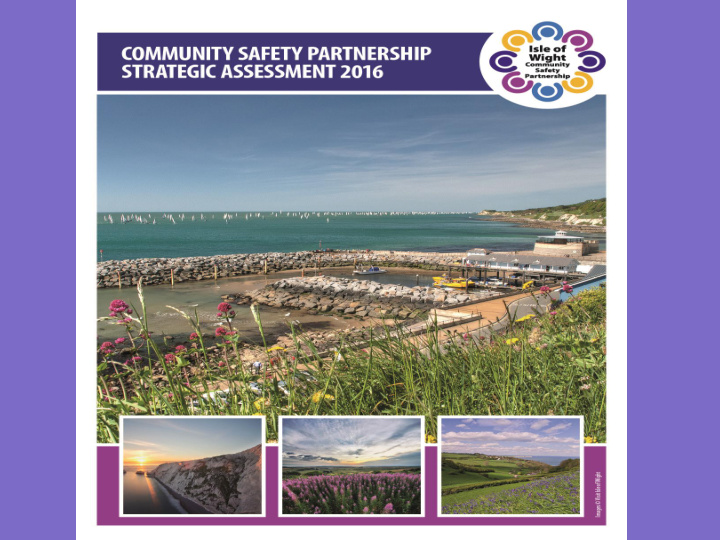



Danika Barber (Senior Public Health Analyst) Community Safety meeting June 29 th 2017
Background • In 2007 the Crime and Disorder Regulations made it a statutory requirement for Community Safety Partnerships (CSPs) to prepare annual strategic needs assessments. – Used to aid strategic planning • This 2016/17 strategic assessment is based on 2015/16 data (latest available to allow comparisons)
Data – sources • Data provided by partners – Hampshire Constabulary – Isle of Wight Council • Youth Offending • Public Health • Regulatory Services • Safeguarding Children • Safeguarding Adults – Hampshire & Isle of Wight Probation – NHS
Data – Comparisons IQuanta Most Similar Groups 2015 • • North Wales - Conwy Cheshire - Cheshire West • • North Wales - Denbighshire Essex - Tendring • • North Wales - Wrexham Hampshire - Isle of Wight • • Nottinghamshire - Newark & Kent - Dover Sherwood • Kent - Shepway • Staffordshire - Newcastle under • Lancashire - West Lancashire Lyme • Leicestershire - North West • Suffolk - Waveney Leicestershire • West Midlands - Solihull • Lincolnshire - Boston
Data – Limitations • Comparisons not available for recent local data • Changes in reporting methodology – police data on violent crime • Community engagement consultation not research – Self-selecting sample
Community Perceptions • Anti-social behaviour • Drugs & alcohol • Violent crime • Road safety • Alcohol related violent crime • Supporting vulnerable people • Burglary
Community Perceptions • 68% felt safe in their community • 15% felt ‘quite unsafe’ or ‘not at all safe’ • 1 in 5 had been victim of crime in last 12 months – 40% hadn’t reported it – CCTV and home crime prevention felt to be effective – Neighbourhood Watch and community safety events not perceived as effective.
Good News - improvements • Child abuse • Gun Crime • ASB incidents
Bad News – areas of concern • Violent Crime 59% – Youth on youth violence 63% – Threat to life 78% – Alcohol and public place violence 41% – Homicide • Domestic Violence 66%
Bad News – areas of concern • Burglary – Non-dwelling 18% – Dwelling 28% – Car key – Thefts of motor vehicles
Re-Offending • 28.2% of offenders re-offend on IOW • Average 0.98 re-offences per offender
Re-Offending
Youth Re-Offending • Marked improvements since 2013 – Rate per 100,000 now in line with England average • But – highest % of reoffenders in any comparator areas – Trend is increasing
Youth Re-Offending
Youth Re-Offending
Drugs and Alcohol
Priorities • 1. Violent crime • 2. Domestic abuse • 3. Drug and alcohol related crime • 4. Anti-Social Behaviour • 5. Serious Acquisitive crime • 6. Delivering the Prevent duty (statutory duty) • 7. Reducing Re-offending (statutory duty)
Contacts • Danika Barber Senior Public Health Analyst danika.barber@iow.gov.uk • Helen Turner Community Safety Manager helen.turner@iow.gov.uk
Recommend
More recommend